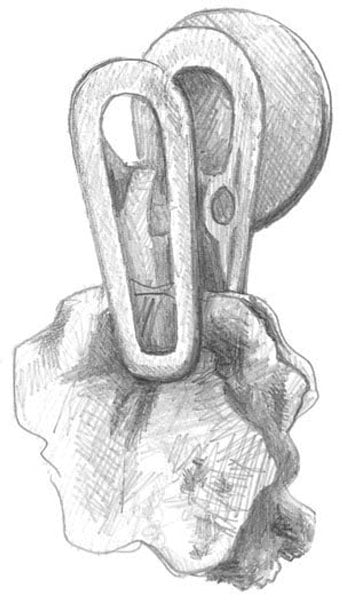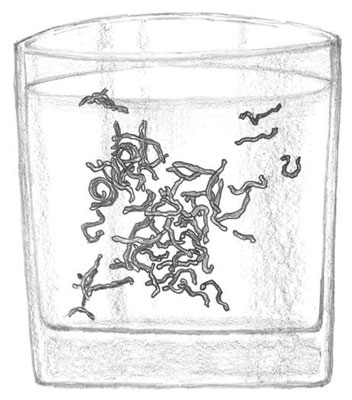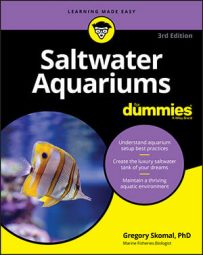Have the same person or people feed the aquarium. This ensures that the feeding is done consistently and with an eye for the right quantities. Letting Uncle Bill feed the fish when he visits may result in a lot of waste and water pollution. Also, keep a tight lid on the tank during a party. Inevitably, everybody wants to feed the fish.
Feeding them too little is better than too much. Use the following guidelines when feeding and you’ll develop a working sense of how much and how often to feed them.
- Offer as much food as your fish will eat in five minutes. Flakes should sink no deeper than one-third the height of the tank. Provide tablets, pellets, or sinking food for bottom fish and invertebrates.
- Feed your fish in very small portions over the five-minute period. If any food is left over after this time, you’re an overfeeder. Bear in mind, however, that some foods, such lettuce or spinach, are nibbled over time, so the five-minute rule doesn’t apply to leafy vegetables. Some foods can be attached to the side of the tank with a food clip, as shown.
 Nibblers appreciate food being clipped to the side.
Nibblers appreciate food being clipped to the side.- If you’re home during the daytime, feed your fish and invertebrates very small portions over the course of the day. In this case, reduce feeding time to about a minute or two per session. If you’re not home, feed them twice a day at the same times every day: once in the morning, once in the evening.
- Always feed your fish at the same spot in the tank. Doing so lets you sneak food down to bottom-dwellers while the surface fish are distracted.
- Rehydrate or thaw food beforehand. Use a separate container, such as a glass.
- Don’t overfeed the fish, no matter how much you think they need more food. Overeating stresses your fish and causes detritus to accumulate in the tank, degrading water quality.
 Thaw frozen food before adding it to your tank.
Thaw frozen food before adding it to your tank.Deal with the oddballs
You’ll find a lot of exceptions when feeding your wet pets. For example, some invertebrates, such as sea anemones and corals, house photosynthetic bacteria that provide them with nutrients, so you don’t need to feed them every day. Their diet, however, should be augmented once or twice a week with fresh, frozen, or live foods.Also, large carnivorous fish typically consume one large meal at a time, so you don’t need to feed them more than once every day or two.
It’s better to underfeed than to overfeed your fishes and invertebrates.
Keep a watchful eye
Watch all your fishes during feeding. During this time, you can also assess your fishes’ health and take a head count. Try to make sure that each gets its share of food, but that’s not always possible. In the ocean world, it’s eat or go hungry, so don’t expect a lot of goodwill.Remember that fish have different mouth shapes, which allow them to feed at different levels in the tank. Some species don’t move to the surface to eat; they wait for food to disperse throughout the tank. Don’t rely on surface feedings and the leftovers of others to feed bottom fish. Pellets or other foods that sink to the bottom should be provided to these fish. You may have to offer food through a turkey baster or distribute food via a feeding stick.
Refusal to eat is one of the first signs of illness, so keep an eye out for fish that seem to have no interest in food.
Always remove food from the tank that hasn’t been consumed. Allow nibblers time to eat — an hour or two — before removing leftovers.
Offer a variety
Freshwater fish and saltwater fish aren’t the same — you know that. If you’ve ever had a freshwater aquarium, more than likely you sprinkled just dry flake food in your tank every day. You need to break that habit. Although you can offer a daily staple, variety is the spice of life for marine organisms.You can try flake food and frozen brine shrimp as your staples, but mix in different foods as your fish acclimate to your aquarium. Try not to feed your fish right after turning on the light, because they won’t be fully alert until about 30 minutes later. In addition, make sure you match the size of the food with the size of the fishes’ mouths. You may need to crush or mulch the food for fish with small mouths. But don’t grind the food too small. Doing so adds fine particles to the water that aren’t ingested and that degrade water quality.
What to do when you're going away
If you’re going to be away from your aquarium for one or two days, the fish will be fine without food. In the wild, most fish feed sporadically and can go days without food, so a little fasting doesn’t hurt them. When you return, don’t feel that you have to feed your fish twice as much because they missed a meal. If you do, much will go uneaten.If you plan to travel for longer periods, you have a couple of options:
- You can arrange for someone to feed your fish. Prepare portions ahead of time and give detailed instructions on how to properly feed your animals. Don’t let her do so at her own discretion unless she’s an experienced aquarist.
- You can purchase an automatic feeder. This specialized piece of equipment dispenses dry food for you while you’re away. You wouldn’t want to load it with fresh seafood, but many processed foods work well.
Test your automated feeder before going away. A feeder that is set up improperly or malfunctions can be deadly to your aquarium. Nobody wants to come home to dead pets.

